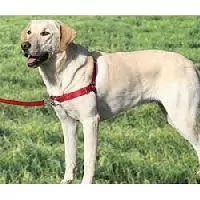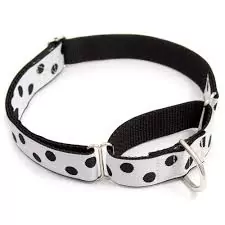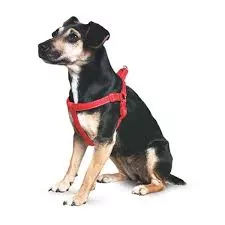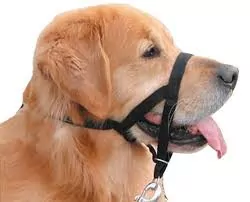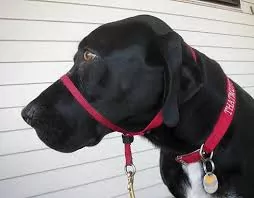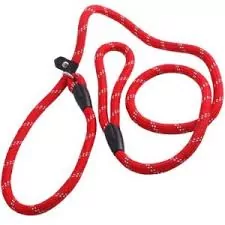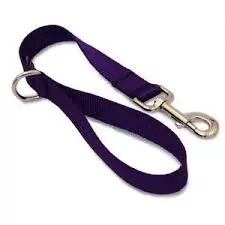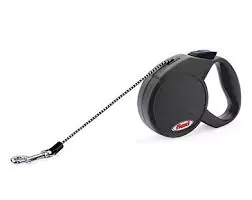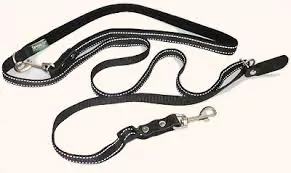There are all kinds of dog collars & leashes out there and sometimes it can be a little difficult to choose the right one for your dog. Many times, a choice is made based on looks, rather than on actual function. I’ve put together a list of the most common kinds of collars, leashes and leaders to make it easier to choose which one is right for you and your dog. Whether you’re training for structured dog walking routines or just want to give your pup safe freedom, choosing the right gear makes all the difference.
1. Standard ‘Belt Buckle” Dog Collar (Same as Standard Clip Collars)
This is your typical everyday dog collar. This collar is great for dogs that don’t need much assistance on leash walks and aren’t prone to pulling or requiring corrections. They’re especially ideal for pups who already enjoy regular outings with professional dog walkers or have graduated from basic training.
2. Martingale (Chain or Fabric)
These collars are worth their weight in gold when training a dog to walk on a leash. The point is NOT to choke the dog. At the tightest point, this collar should fit the circumference of your dog’s neck, not pinch or strangle your dog.
The idea is that when you give the leash a corrective tug the collar will apply pressure indicating that you want your commands followed. When the dog obeys the leash it lets loose and the dog feels it loosens. For obsessive pullers wearing this collar higher up on the neck, just behind the ears can be a very important tool for keeping control of the dog. Coupled with a specific walking tool, such as a gentle leader or halti, this is my number one training collar for most dog types. For those exploring advanced leash manners or social pack outings through structured professional dog walking services, this combo is a game-changer.
3. Body Harness
Dog harnesses are NOT for every dog. They are fantastic for small dogs and puppies. Small dogs are more fragile and can sometimes sustain injury to their necks from being pulled. The harness is a much more comfortable and safe point to lead from.
For a large boisterous dog, a harness can be like tethering yourself to a dog sled and screaming “MUSH”! You’re guiding the dog from the strongest point on their body and they have the center of gravity advantage on you as well. I have been overpowered a time or two by a large dog in a harness who spotted a squirrel, to the point that my only recourse was to lay down on the ground and be “dead weight”. Correcting in that situation is next to impossible with a harness.
4. Front Clip Harness
This harness can be a little bit better for leading since the point of attachment for the leash is in the front, not on the back. The only thing that I’ve found with these harnesses that can be problematic is that they can sometimes cause chaffing/rubbing around the legs/armpit area since they move around and the leash can go on either side and move the strap.
5. The Halti
The Halti is a training tool that allows you to control the side-to-side movement of your dog’s head (helping with steering) and also control your dog’s mouth. This tool is great for harder-to-control dogs who may also exhibit overly excited behaviours while meeting other dogs in the street. When you pull on the leash, the halti tightens around your dog’s muzzle; keeping their mouth closed and controlling the direction. This can also be helpful for dogs that have issues with eating garbage/faeces off the ground while out on walks. You can tighten the Halti to protect your dog from getting into harmful things. This is especially helpful if your dog is part of a group from one of your local doggy daycare centres and needs extra support in dynamic environments.
6. The Gentle Leader
The Gentle Leader is very much like a Halti, except that it doesn’t close the dog’s mouth. It is more for being able to control the direction of your dog’s head, not for controlling the mouth itself. It’s a good tool to have for people who have big dogs who are generally well-behaved but still need extra control at points during their walk.
7. Loop Leash
You can use this leash completely separately from your dog’s collar. It acts in much the same way as a martingale in that it tightens when you pull and loosen when you relax the tension. Remember one thing when using this leash; you CAN strangle a dog with this leash, it is not the same as a martingale, it is like a choke chain.
8. The Short Leash
LOVE THESE LEASHES! We do 99% off leash with our pack so when we do leash walks they are for leash training. The dog should be at your side, not zig-zagging around in front of you, stopping to pee on every single pole, sniffing/eating things off the ground, pulling/stopping at every dog, etc. It’s a great leash for training. Since it’s short, however, it may not work well with all breeds of dogs (ie. small dogs, short-legged dogs). It’s the perfect training tool to use before graduating your dog into a pack walk or supervised outdoor time at a reputable dog care facility.
9. Retractable Leash
These leashes can a both great and completely horrible if used incorrectly. Living in the city, I see people walking down the busy streets with their dogs 30 feet ahead of them jumping on people, getting tangled around poles, people, bikes, etc. What is the point of the leash at all at that point, they could just run into traffic anyway!? The maximum extension is useful once you get to the park, however. You can allow your dog to sniff and do their business freely (if there is no off-leash zone).
These leashes are not typically great for larger dogs or dogs in training. You’ll be hammering on the thumb lock and putting so much pressure on the mechanism that it’s not likely to last very long at all. It’ll start skipping and eventually might not work when you need it to.
The Adjustable Dog Leash
These leashes are great for so many reasons as your go-to walking leash. They can adjust lengths based on the stage of the walk you’re at (focus walking, actual training, pee/poo freedom) and you can also attach the leash to your body (ie. around your waist or across your chest) if you want/need your hands and arms. This is great when you want to run errands and have bags to carry, want to jog with your dog, don’t want to worry about dropping the leash during the walk, etc.
These leashes are double-ended clips with multiple grommet holes along the length of the leash, which allows you to change the length. Another use for the leash can be when you need to secure your dog to something. Being able to unclip the handle end and wrap it around something securely or clip it directly to a steel ring is a handy little perk as well!
When it comes to choosing the right leash for your dog, there are many options available. From choker chains and Haltis to retractable leashes and adjustable straps, each type of leash has its own advantages. Depending on what you need from a leash – whether that be better control over direction or more freedom while walking – you can find an option that works best for both you and your pup! Ultimately, when selecting a leash, think about how it will fit into your lifestyle, will this tool help keep everyone safe? And remember: no matter which kind of lead you choose, always ensure proper use by following instructions carefully and making sure not to pull too hard during walks with your furry friend.
